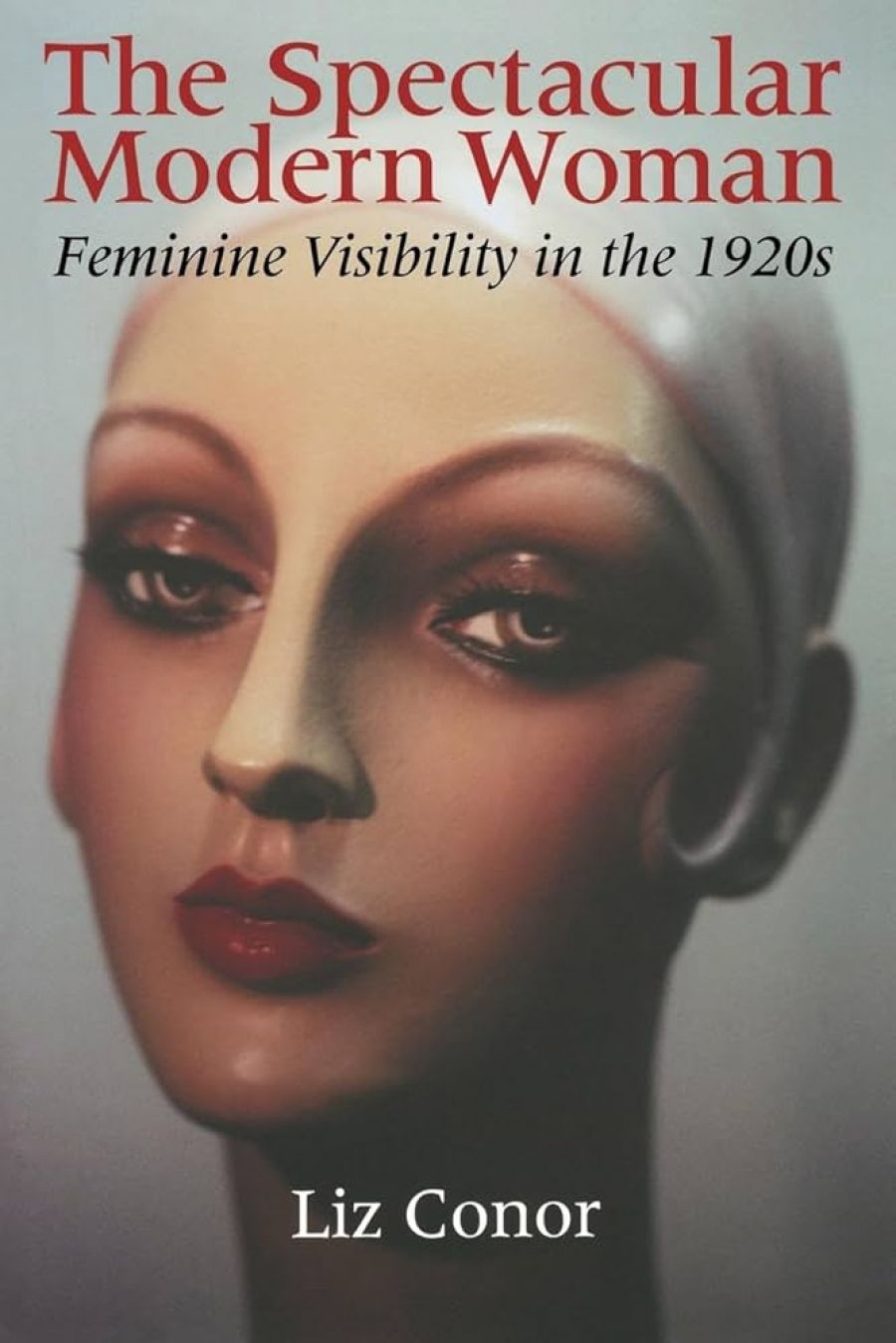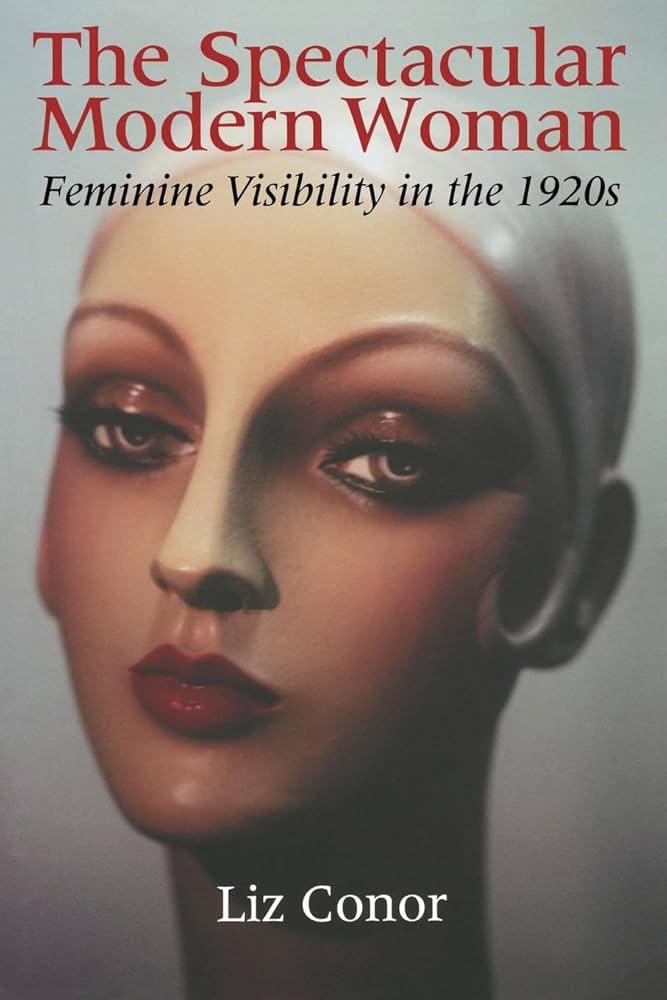
- Free Article: No
- Contents Category: Feminism
- Review Article: Yes
- Article Title: Sydney's Prettiest Ankles
- Online Only: No
- Custom Highlight Text:
Liz Conor’s accomplished history of the ‘modern appearing woman’ in 1920s Australia has much to recommend it. The archival work that it represents is fascinating and suggestive of a trove of female energy, sadness and invention. Hilarious and ambivalent stories emerge of Sydney ‘gals’ and Business Girls, of a New York flapper with traffic lights painted on her silk stockings, and of Amelia, an indigenous maidservant, who invented grunge without her mistress recognising style when it stepped up to her table in a red skirt, man’s striped shirt and big boots. These and other stories trace the vigour of young women’s determination to respond to the consumer possibilities of a spectacular new world of media images, electric light and postwar male uncertainties.
- Book 1 Title: The Spectacular Modern Woman
- Book 1 Subtitle: Feminine visibility in the 1920s
- Book 1 Biblio: Indiana University Press, $47.95pb, 352pp
- Book 1 Cover Small (400 x 600):

- Book 1 Cover (800 x 1200):

Conor’s thesis is that the modern woman in the 1920s was characterised by her position in a newly constituted visual field. She ‘appeared’ in a sequence of scenes, to which she contributed, and through which her decorative and sartorial choices were defined, approved and judged. These appearances were, in Conor’s account, essentially urban. The City Girl posed a challenge to herself and to other women by taking part in a competitive arena of attraction and glamour, to which country girls could only aspire by migration to the urban swirl, and in which men were visually irrelevant but necessary as those who looked, and looked again. The mise en scène of the spectacular modern woman included the street, the photographic spectacle of the beauty pageant, the cinema (as audience and aspiring starlet, or actual star), the shop window and the élite whiteness of the late colonial frame.
The book succeeds most where these scenes are described through the caustic language of the Sydney and Melbourne press, and through the cartoons, which veer between a vilification of seemly young women and delight in the discomfiture of unsightly middle-aged men. Women were criticised for their tawdry make-up, and men were pitied for their enslavement to the dimpled knees and delicate ankles of the flapper. In The Truth, a magazine that Conor uses extensively and that, in its flamboyant opinions, resembles a moralistic version of Murdoch’s The Sun, the flapper was derided as decadent and self-deluded: ‘They are jaded, bored, and tired. Their crimped and marcelled hair has lost its vitality, their skins are lifeless ... They are bored to distraction and eternally on the look out for new excitements to stimulate interests.’
The sheer nastiness of much of this reportage is put in deserved perspective by a linocut from 1928, published in the Sydney magazine Undergrowth: A Magazine of Youth and Ideals. The artist, Ysobel Irving, shows a strongly contoured woman in the workplace – not flirting, primping or squirming – just walking from one place to another. It’s a relief to be reminded that the modern woman may have been sexy and ‘out there’, but that she was also ‘purposive in her movements, sensible, and not distracted’.
The rise of the salaried masses in the world’s industrialising cities led to a new demand for commodities, shops and clerical staff. Women filled many of these low-paid positions and became part of the cycle of consumption and production that paid their wages. They went out in the evenings together for fun, and their presence on city streets confused those men who liked their wives at home and their prostitutes easily recognisable. This phenomenon has been explored in other feminist histories, at least two of which could have been usefully cited in the present book. I am thinking of Deborah L. Parsons’s Streetwalking the Metropolis: Women, the City and Modernity (2000) and Shelley Stamp’s Movie-Struck Girls: Women and Motion Picture Culture after the Nickolodeon (2000). Both these books explore the visibility of a dressed woman: “‘as a model of mantles and jackets” it is not her body that Millicent prostitutes to the gaze but the garments she wears’ (Parsons) and as a public nuisance: ‘An exasperated Motography headline complained of “Those Hats Again” ... reporting that audience members were “annoyed incessantly” by women who continued to wear hats throughout the show, effectively blocking the view of those behind’ (Stamp).
Those women were, like Conor’s Sydney gals, getting in the way of the male gaze as much as they titillated it. And, as Conor’s opening references to her own spectacularisation suggests, the ambivalence around women out on the streets, especially at night, is still with us. We are casually punished for getting in the way. Most women of most decades since the 1920s can recount experiences of being kerb-crawled, abused or ‘undressed’ by passing male traffic. True, one is usually dressed up and ‘appearing’ at the time, or in ‘kitten’ mode, as Conor describes her own youthful style of the 1980s. I think I am a contemporary of Conor’s and probably used the same shade of lipstick, but I would have omitted the kitten references: they obscure the point of the book. Was a flapper a powerful kitten or an indecisive agent of the scenes in which she appeared? Or both? What difference does sixty years make between one and the other?
The theoretical intensity of Conor’s writing is not always convincing. In particular, the central tenet of the ‘modern appearing woman’, although descriptive, seems tautologous when the Modern Woman and New Woman are accepted terms, which already include the notion of female spectacularisation, and of being in public. Still, the book offers an excellent glimpse of Sydney’s prettiest ankles.


Comments powered by CComment